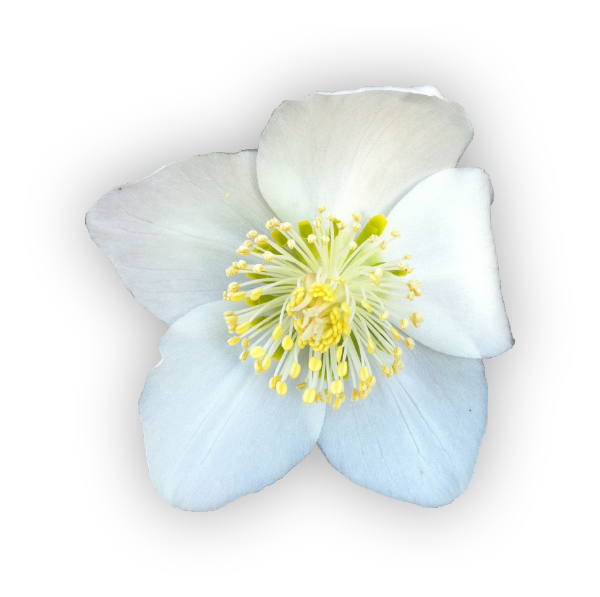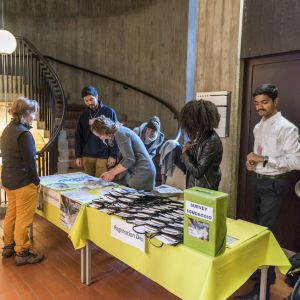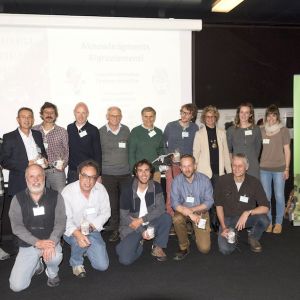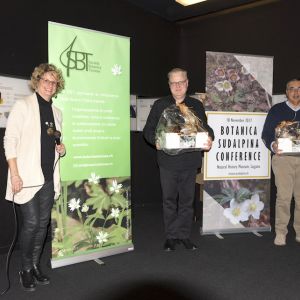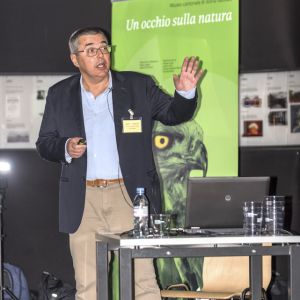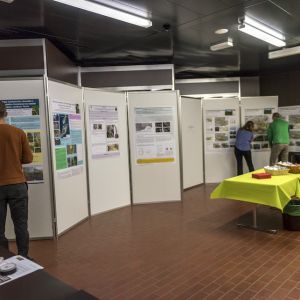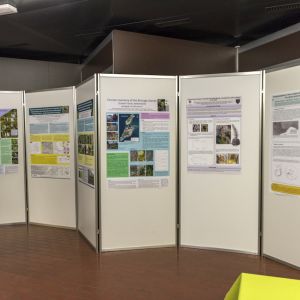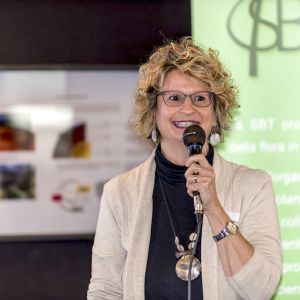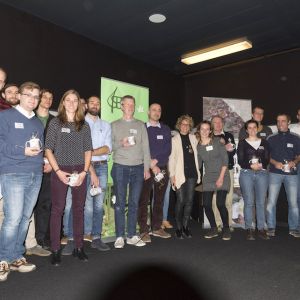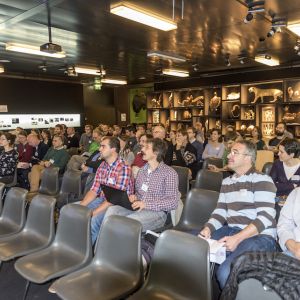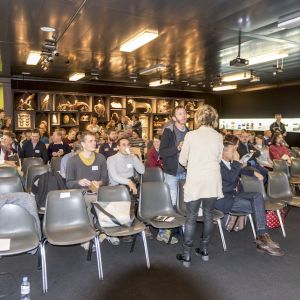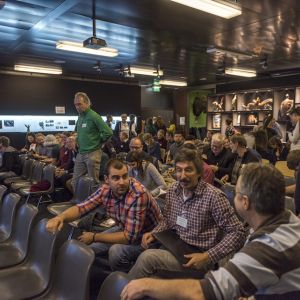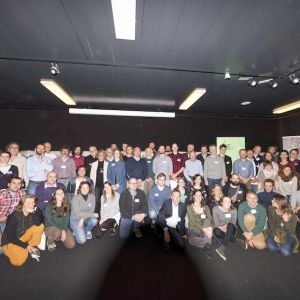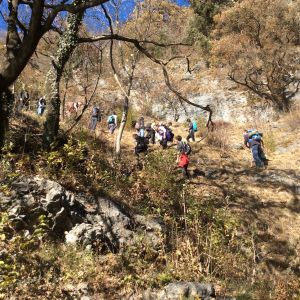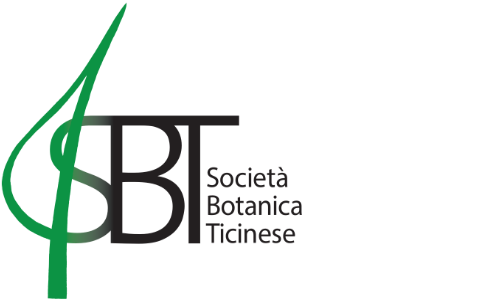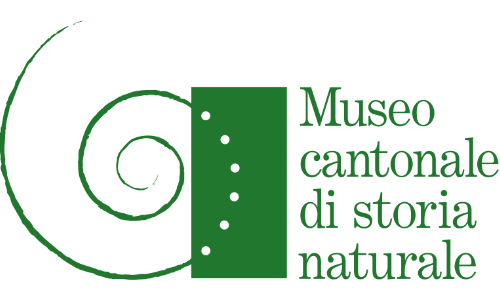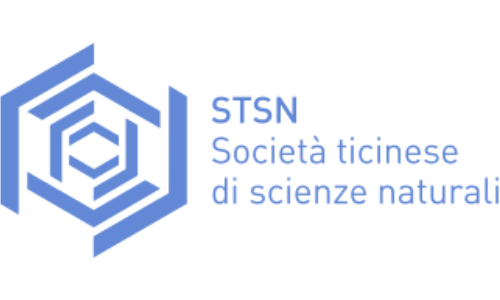Congresso di Botanica Sudalpina 2017
18 novembre - Museo cantonale di storia naturale - Lugano
Il Congresso di botanica sudalpina è nato su iniziativa della Società Botanica Ticinese e ha preso forma grazie alla collaborazione con il Museo cantonale di storia naturale, Info Flora e la Società Ticinese di Scienze Naturali.
Il Congresso di botanica sudalpina vuole celebrare la flora del Sud delle Alpi e in particolare del Cantone Ticino. È preso in considerazione qualsiasi lavoro di natura scientifica su aspetti di biogeografia, conservazione, diversità, ecologia, evoluzione, fisiologia, floristica e sistematica delle specie vegetali spontanee e neofite del Versante Sud delle Alpi e in particolar modo del Cantone Ticino.
Il Congresso di botanica sudalpina si prefigge di riunire tutti gli attori attivi nella ricerca scientifica (di base e applicata) sulla flora del territorio ticinese e limitrofe, ottenere una panoramica della situazione attuale (per la prima volta nel Cantone Ticino!), promuovere collaborazioni e, eventualmente, delineare priorità e prospettive. Chiunque abbia interesse nelle tematiche sopra citate può inoltrare il proprio abstract o partecipare come uditore.
Atti del congresso (PDF - 3.3MB)
Postcard: - / Poster: -
Congresso - Programma - 18 novembre
08:30 |
Registration (entrance) |
09:30 |
Welcome (Conference room) |
09:45 |
Adaptation of alpine plants to climate changeProf. Dr. Rolf Holderegger |
10:30 |
Does glacial retreat amplifies microrefugia opportunities for alpine plants during warm stages?Rodolfo Gentili |
10:45 |
The importance of stability throughout time in affecting the geographical pattern of endemism richnessGabriele Casazza |
11:00 |
Learning from the past to forecast the future: a case study on Berardia subacaulis, a paleo-endemic species of the SW AlpsMaria Guerrina |
11:15 |
Coffee break & Poster session (Posters and coffee room) |
11:40 |
Ain’t no mountain high enough: the evolution of Asteraceae in Alpine ecosystemsLuca Pegoraro |
11:55 |
Festuca in the (Southern) Alps – still an open construction sitePeter Englmaier |
12:10 |
Reproductive ecology and phylogeography of a self-compatible alpine specialist, Primula halleri (Primulaceae)Jurriaan M. de Vos |
12:25 |
What about extrafloral nectaries in European temperate zones? Answers from the Swiss Southern AlpsBrigitte Marazzi |
12:40 |
Lunch |
14:30 |
Plant traits and strategies in vegetation analyses: concepts and applicationsProf. Dr. Bruno E.L. Cerabolini |
15:15 |
Changes in land use are a main driver of recent plant biodiversity shifts in Swiss Alpine grasslandsConstantin E. Pöll |
15:30 |
Successful restoration of abandoned terraced vineyards and grasslands in the canton Ticino, SwitzerlandDenise Binggeli |
15:45 |
Settlements as a source for the spread of non-native plants into suburban forests in Southern and Northwestern SwitzerlandLuca Gaggini |
16:00 |
Generative reproduction potential of Pueraria lobata in southern SwitzerlandNicola Widmer |
16:15 |
Coffee break & Poster session |
16:40 |
Val Grande National Park’s Vascular Flora (Piedmont, NW Italy)Roberto Dellavedova |
16:55 |
Plant cartography between Lago Maggiore and Lago di ComoMichael Kleih |
17:10 |
Flora of the dolomite cliffs of Southern TicinoPhilippe Juillerat |
17:25 |
Peculiarities in Red List assessments concerning the Southern Swiss AlpsMichael Jutzi |
17:40 |
Final discussion |
18:00 |
Closing ceremony & Aperò |
Istruzioni
Invitati
Prof. Dr. Rolf Holderegger
Reactions of alpine plants to climate change
Rolf Holderegger
WSL Birmensdorf and ETHZ Zürich
The ongoing global climate change (temperature and precipitation regimes) is supposed to be particularly strong in the Alps. Hence, also its effects on the alpine flora are assumed to be marked. The principal reactions of alpine plants to climate change are: (local) extinction, migration by seed to other sites or habitats, short-term ecological adaptation of individuals (plastic responses), and genetic (i.e. evolutionary) adaptation. However, for alpine plant species and alpine vegetation a very simplistic response is often assumed with species and plant communities simply migrating upwards when temperatures are increasing. But what do we really know about the reactions of alpine plants species to climate change? Are there any recordings of extinction due to climate change yet? Is there any evidence for migration to new sites? Are short-term plastic responses sufficient to deal with changing temperatures and precipitation patterns? Is genetic adaptation really so slow that it cannot keep step with climate change? During the last two decades, researchers from across the Alps have carried out substantial research and accumulated significant results and information on how the alpine flora reacts to climate change. These results are, however, sometimes contradictory. I will first review some of these results with respect to extinction, migration, ecological and genetic adaptation from such diverse fields as floristics, vegetation science, ecology, ecophysiology and genetics. I will then try to bring them together in a more general, though still speculative synthesis. In doing so, my focus will be on the Swiss and Southern Alps.
Membro di Direzione del WSL e Capo dell'unità di ricerca 'Biodiversity and Conservation Biology' - Istituto federale di ricerca WSL - Birmensdorf, Svizzera
Presidente della Società Botanica Svizzera
Prof. Dr. Bruno E.L. Cerabolini
Plant Traits and Strategies in Vegetation analyses: concepts and applications
Bruno E.L. Cerabolini
DiSTA - University of Insubria, Varese, Italy
In the last decades several aspects of plant primary functioning have been confirmed at the global scale. These include the observation that the leaf economics spectrum forms part of an overall ‘plant economics spectrum’, or a trade-off between investment of resources in perennial tissues or the early use of resources in reproduction. A secondary spectrum, the ‘plant size spectrum’, is heavily involved in plant competitive ability and has been confirmed to involve the integration of size-related traits at the level of seeds, organs and whole plants. These major axes of plant functional variability work together to form the ‘Global spectrum of plant form and function’. This provides a framework in which plant primary functioning can be quantified and compared amongst species and individuals, and has been recognized to represent major axes of variability predicted by theories such as Grime’s CSR (competitor, stress-tolerator, ruderal) adaptive strategy theory. Recently, common traits collected world-wide have been used to produce a practical tool to allow adaptive strategy classification, in which plant life forms can be compared at the same scale. Can this become a routinized method to investigate vegetation processes like coexistence and biodiversity? Adaptation along successional stages? Plant communities response to disturbance or nutrient enrichment? Ecosystem properties and services? Nowadays the amount of researches across biomes world-wide comparing plant communities along environmental gradients seems to be encouraging.
Full Professor of Environmental and Applied Botany - Dipartimento di Scienze Teoriche e Applicate Università degli Studi dell'Insubria - Varese, Italy
Come raggiungere il congresso
La sede del congresso è presso il Museo cantonale di storia naturale in Via Carlo Cattaneo 4, 6900 Lugano.
Come arrivare con i mezzi pubblici
La fermata del Bus per il congresso è Lugano, Palazzo Studi.
- Lugano stazione FFS con Bus 2 (direzione Castagnola) – Lugano, Palazzo Studi (5 fermate). Ogni 15 min circa.
- Lugano stazione piazza Besso con Bus 3 (direzione Canobbio, Mercato Resega) - Lugano, Palazzo Studi (5 fermate).
- Lugano stazione Nord con Bus 443 (direzione Lugano Autosilo Balestra) – Lugano, Cappuccine con Bus 2 – Lugano, Palazzo studi.
Per chi arriva in auto
Il Museo dispone di un numero limitato di posteggi. In alternativa vi sono posteggi a pagamento nel parking Campo Marzio di fronte alle piscine comunali (a ca. 100m dalla fermata dei bus, Palazzo studi).
Hotel e ristoranti
Alberto Franzoni, 1922
"Quindi è che anche nel Ticino il viaggiatore, che cali dalla Novena, dal S. Gottardo e dal S. Bernardino a Locarno od a Chiasso, vede in breve giro di tempo dispiegarsi dinanzi al suo occhio ammirato e succedesi le vegetazioni de' climi più svariati, dai geli della Lapponia alle tiepide aure del mezzodì, e vi saluta le piante del freddo nord, quelle della Germania nebulosa, quelle dell'alpestre Elvezia, così pure molte di cui s'allietano i colli e i piani lombardi e la flora mediterranea."
Comitato organizzativo
Brigitte Marazzi
Info Flora, Lugano
